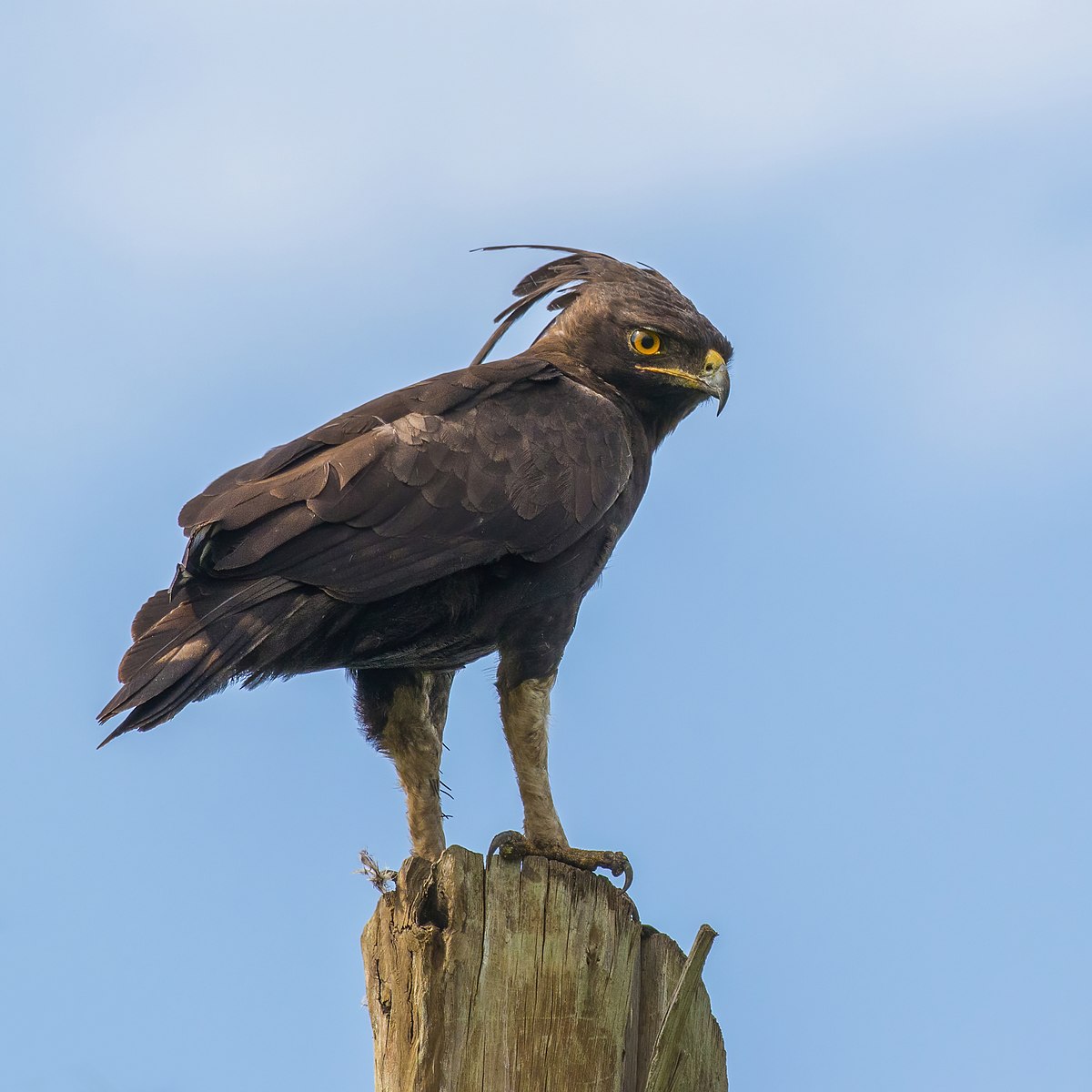Crested eagles, also known as Crested Serpent-eagles, have a unique mating process that involves aerial displays and nest-building. During the breeding season, the male and female eagles engage in aerial displays, soaring together and performing undulating flight patterns to strengthen their pair bond and signal readiness to breed.
Aerial Displays and Nest-Building
The mating process of crested eagles begins with aerial displays during the breeding season, which typically starts in March or April. The male and female eagles soar together, performing a chorus of calls and undulating flight patterns. These displays are believed to strengthen the pair bond and indicate their readiness to mate.
Once the pair has decided to mate, they work together to build a nest, which is usually located in the central fork of a large tree. The nest is a huge platform made of sticks and is placed high up in the tree.
Egg Laying and Incubation
 Image source: Long-crested eagle By Charles J. Sharp
Image source: Long-crested eagle By Charles J. Sharp
The female crested eagle lays one to two cream-colored eggs, sometimes marked with pale brown and lilac-gray spots. However, it is important to note that only one young has ever been documented at a time in a nest.
The incubation period lasts for 40-50 days, during which the female spends the majority of her time caring for the eggs while the male brings her food. When the young nestling hatches, it is covered in soft, pale down and relies on its mother for warmth and protection.
Parental Care and Fledging
The female crested eagle remains very close to the nest, brooding the nestling to maintain its temperature and guarding it from predators. The male is responsible for catching enough food to feed himself, the female, and the nestling, which grows quite quickly and is ready to fly from the nest at around 4 months of age.
Physical Characteristics
Crested eagles are known to vary in size and coloration, with a defining characteristic being the dark, short, round crest on their heads. They have wide wings and display a distinctive white band near the end of their tails and along the trailing edge of their wings.
Conservation Status
Unfortunately, crested eagles are currently classified as Near Threatened by the IUCN due to habitat destruction, hunting, and low densities in their breeding areas. Their seemingly high dependence on sprawling forests makes them particularly vulnerable to the impacts of deforestation and logging.
References:
– The Peregrine Fund. (n.d.). Crested Serpent-eagle. Retrieved from https://peregrinefund.org/explore-raptors-species/eagles/crested-serpent-eagle
– The Peregrine Fund. (n.d.). Crested Eagle. Retrieved from https://peregrinefund.org/explore-raptors-species/eagles/crested-eagle
– Wikipedia. (2021, August 2). Crested eagle. Retrieved from https://en.wikipedia.org/wiki/Crested_eagle

